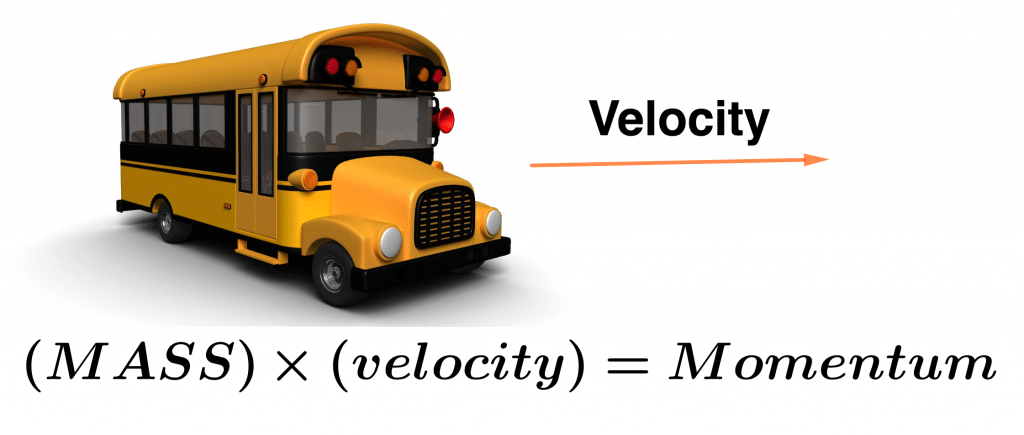Topic Content:
- Definition of Momentum
- Definition of Impulse
What is Momentum?
The momentum of a body is the product of the mass of a body and its linear velocity. The symbol that is used to represent momentum is p.
Momentum, p = mass (m) × velocity (v)
p = kg × ms-1.
Its unit is kgms-1. It is a vector quantityVector quantities are quantities with magnitude and direction. Examples of vector quantities include displacement, velocity, position, force, and torque. More.
The momentum of a body depends on the mass and the velocity with which the body is moving. Its direction is the same as the direction of the object’s velocity.
A bus can have a large momentum even if it’s moving slowly because of its large mass.

A bullet can have a large momentum even though it has a small mass because it’s moving with a high velocity.

If an object is at rest it has no momentum no matter how large its mass is.
You are viewing an excerpt of this Topic. Subscribe Now to get Full Access to ALL this Subject's Topics and Quizzes for this Term!
Click on the button "Subscribe Now" below for Full Access!
Subscribe Now
Note: If you have Already Subscribed and you are seeing this message, it means you are logged out. Please Log In using the Login Button Below to Carry on Studying!



Well understood and am impressed with the working examples…
God bless you….